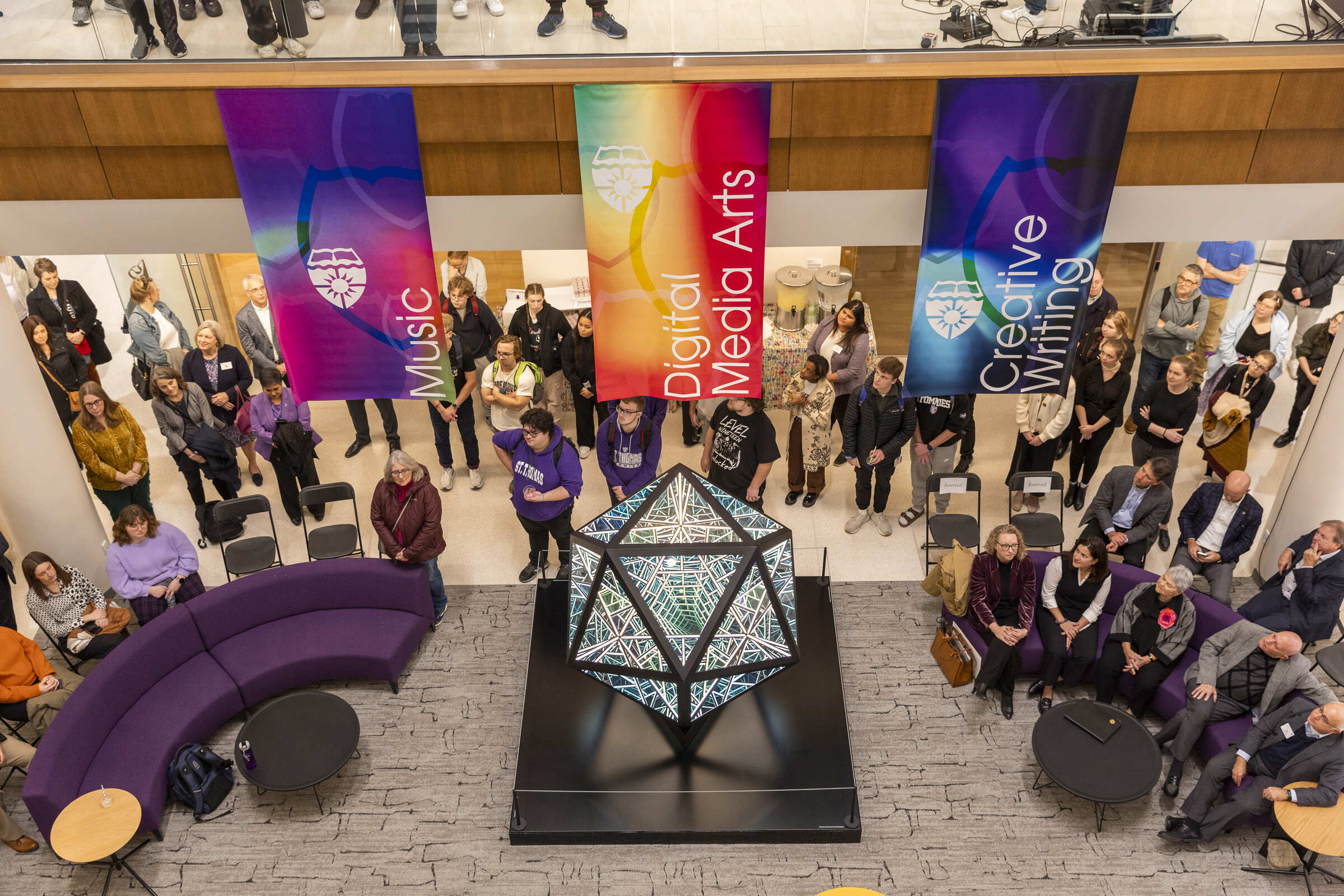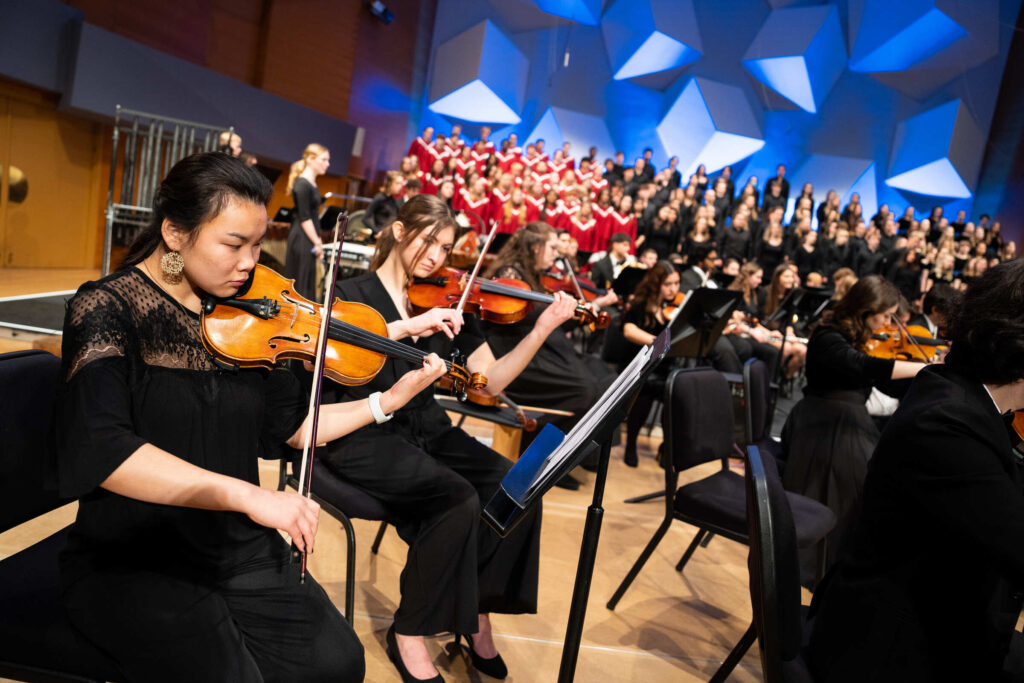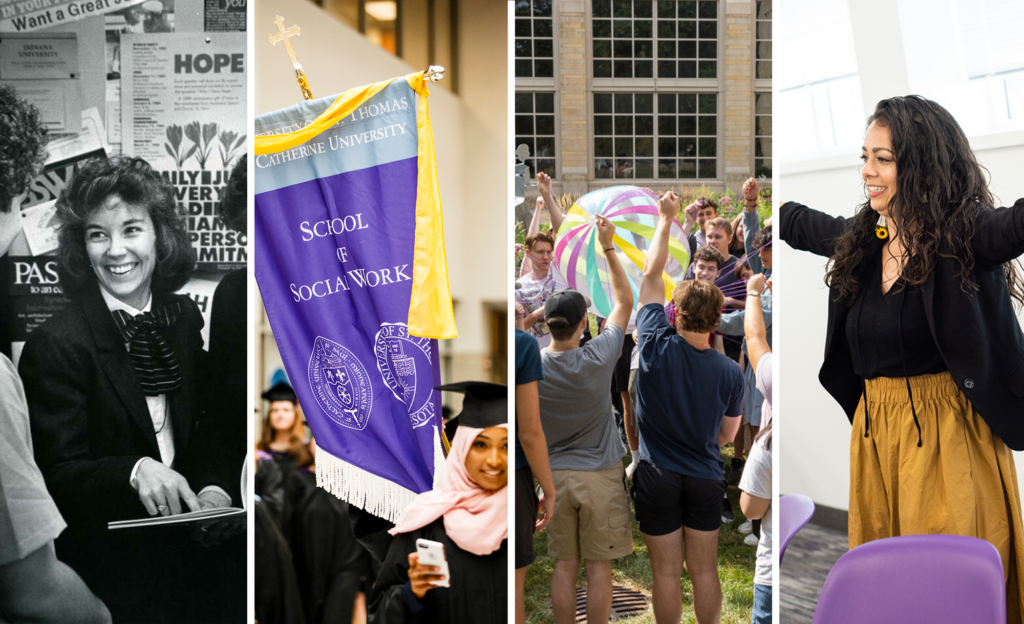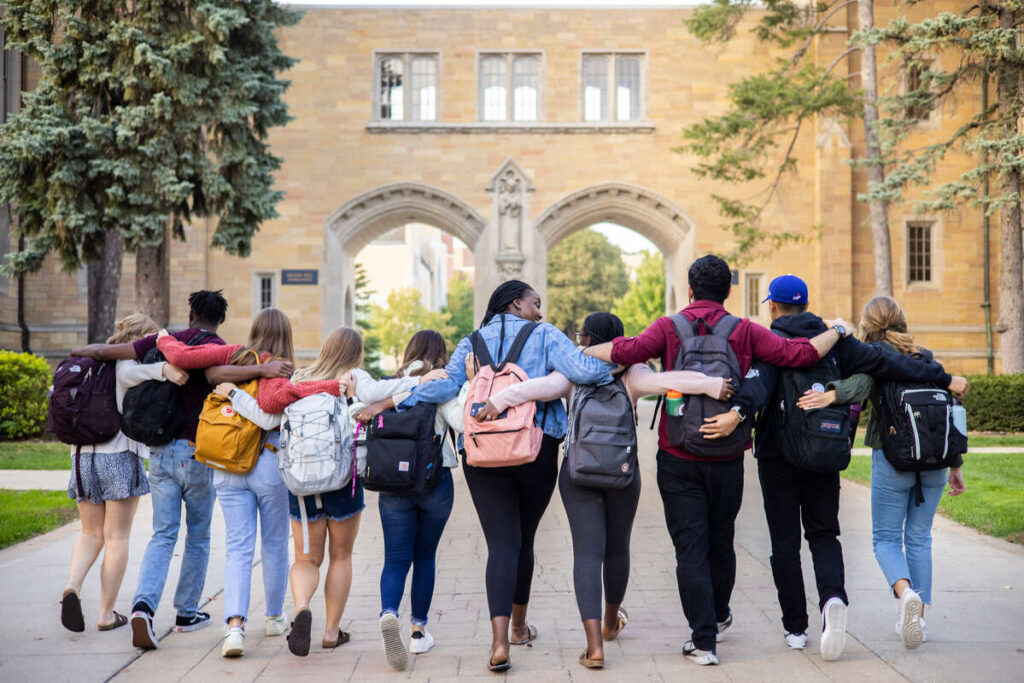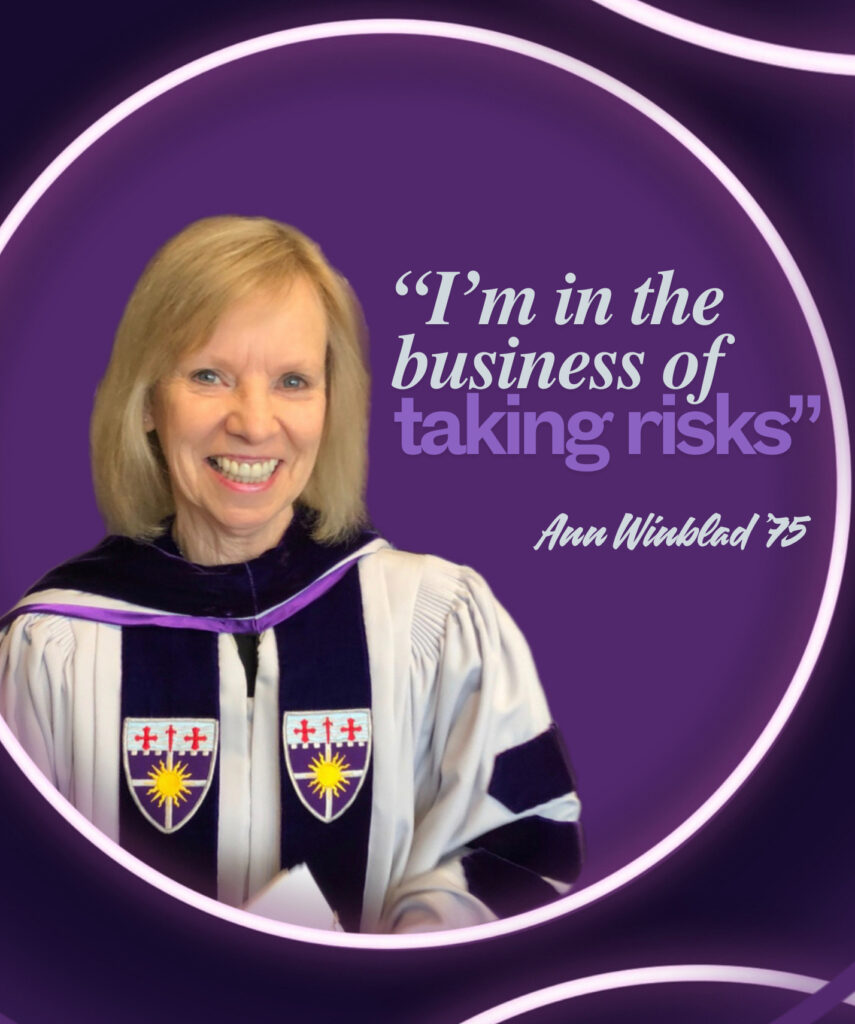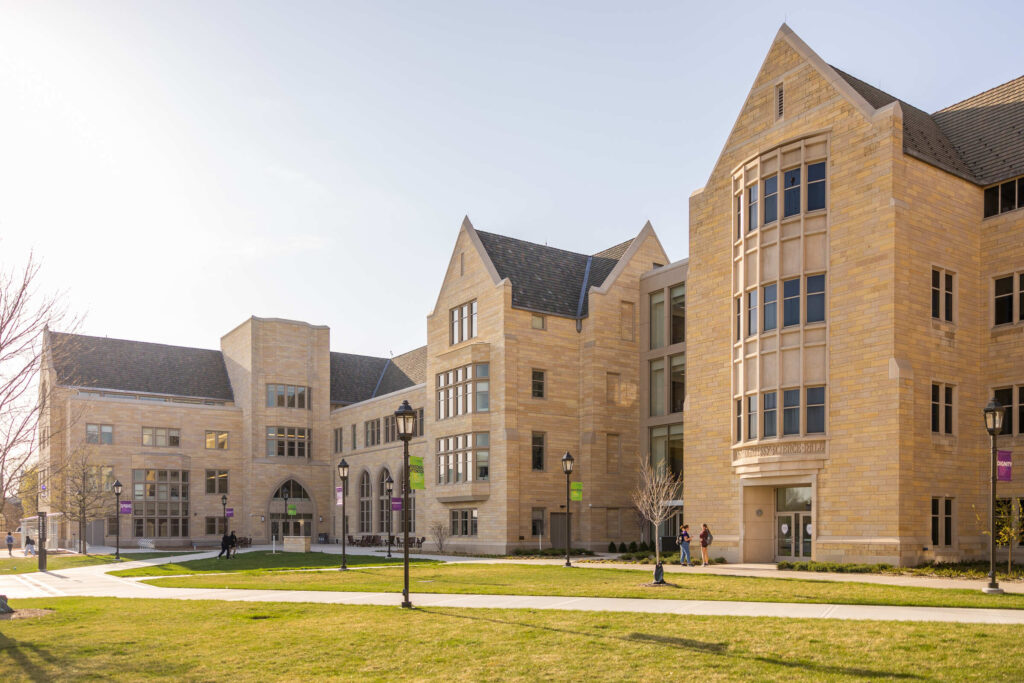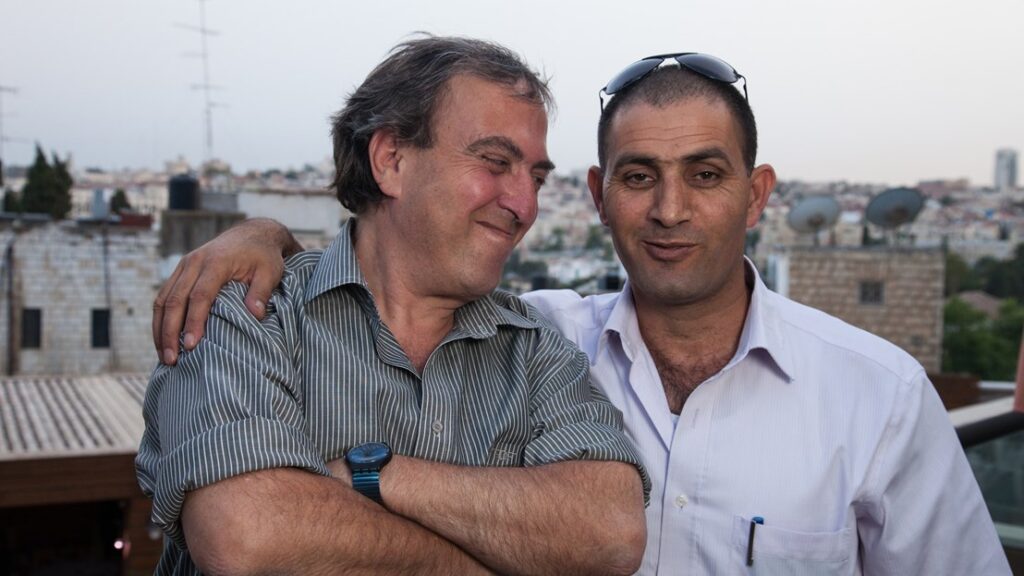One thing was for certain: This wasn’t your average band concert. To the passerby, it may have sounded like an odd assortment of notes leaking out of the Schoenecker Center’s new performance hall at the University of St. Thomas.
“It can seem like a bunch of chaos,” said performer and digital media arts major Alejandro Vega ’27. “What’s actually happening is we’re reacting to each other.”
Vega and fellow Tommies were in the middle of an improvisational piece inspired by the Tower Project, a 3D sculptural score. Together, along with the sculpture’s creator, David Means, they formed a circle around the 6-foot work made from bits of wire, Styrofoam balls and pages of musical composition.
Part free jazz, part experimental jam session, the evening encouraged St. Thomas students to have a musical conversation, unencumbered by musical tradition.
“We make assumptions when we’re making music, and this was a way to break free from a lot of that and just talk to each other,” Vega said.
The Tower Project received funding this fall as part of a significant push to bolster arts programming across campus. From author talks and narrative exchanges to art exhibitions and guitar lessons, the arts at St. Thomas are having a moment.
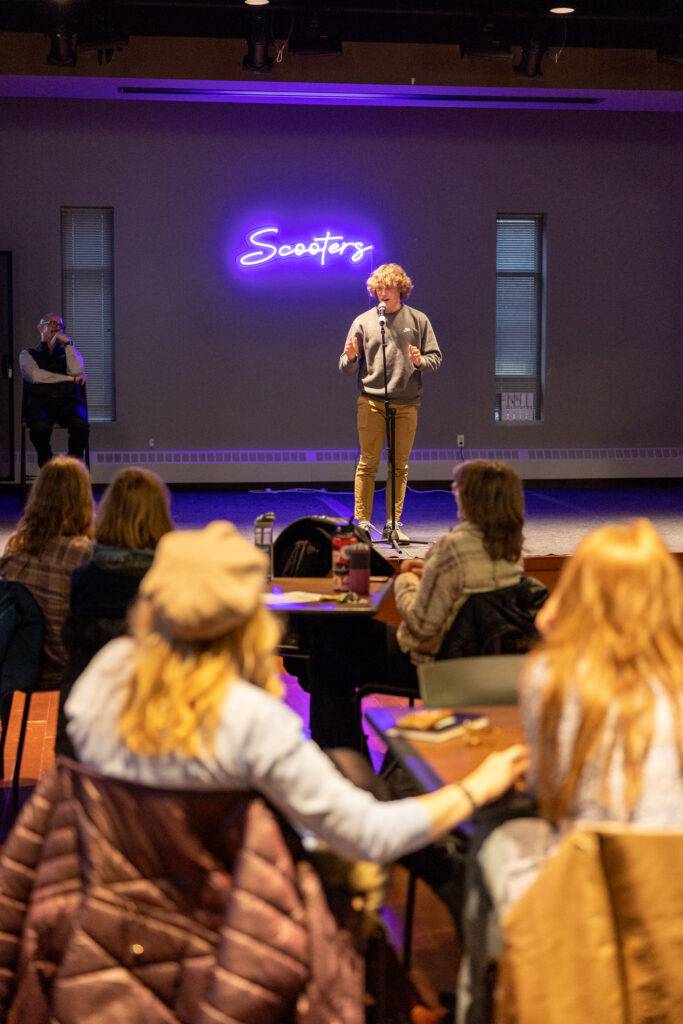
Behind the deliberate crescendo is the new Arts at St. Thomas initiative from the College of Arts and Sciences (CAS). Leaders across multiple disciplines – music, literature, visual arts and storytelling – are working collaboratively to expand opportunities to engage with the arts.
Buoyed by record-setting philanthropy and new performance and rehearsal spaces, artistic connection is riding a noticeable flourish of Tommie momentum.
“I’ve never felt so connected as I do now with my fellow classmates,” communications major Erika Eastlund Cortes ’26 said. The junior helped organize elements of the university’s new Scene Setters program, which promotes storytelling through theater presentations, workshops and story slams.
Eastlund Cortes has taken the stage herself at various events to share stories, some comedic, some sad, but all, deeply personal.
“Honestly, it’s been life-changing to tell and hear other stories. We get to see each other, not just as random classmates or professors, but as people. It forms community.”
The arts have long played a central role in education at St. Thomas. Research studies regularly show that arts educational experiences produce significant positive impacts on academic and social development.
“We want our students to play, to experience creative risk-taking in safe environments where they can discover their purpose and find ways to articulate their mission and vocation in life,” said Kristina Wenzel Egan, assistant professor of communication studies and a faculty adviser for the new Scene Setters program.
In an increasingly divided and often isolated world, St. Thomas leaders say their work to incorporate the arts has taken on a new sense of urgency. The College of Arts and Sciences is tapping into art’s ability to act as a glue, connecting people and increasing understanding, while ultimately encouraging a culture of encounter.
“When we listen to others and learn how to be present for others, and slow down a bit before we make assumptions, we may just find that we are not so far apart,” said Dr. Amy Muse, professor of English and a fellow faculty leader for Scene Setters.
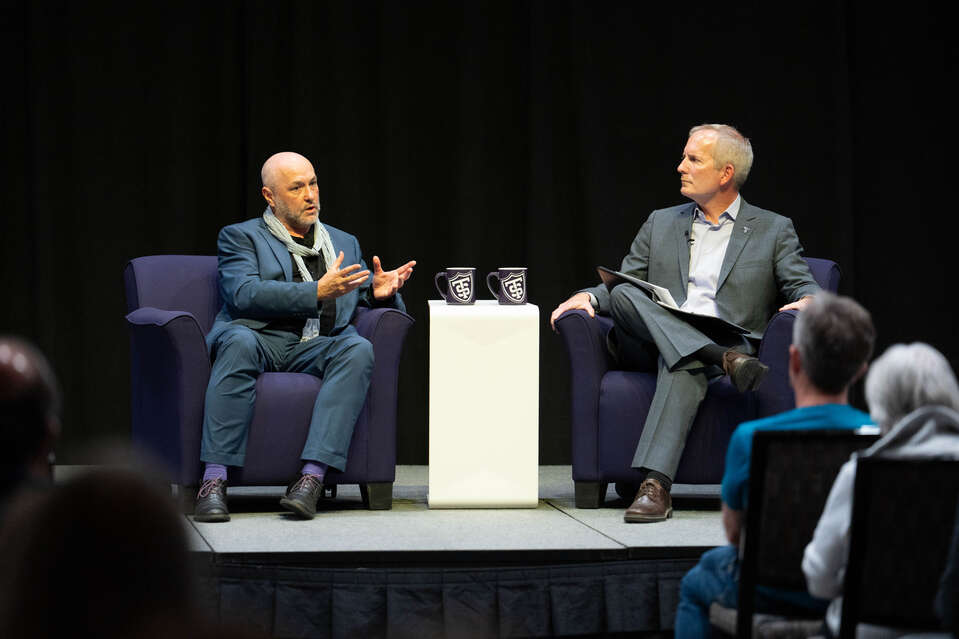
Chances to encounter new perspectives have populated an increasingly vibrant campus arts calendar. Literary stars like Sandra Cisneros (The House on Mango Street) and Colum McCann (Apeirogon) shared their stories on campus. The play “Every Brillant Thing” was staged inside the Schoenecker Center. And National Geographic Explorer Joshua Irwandi was on hand to reveal his “Oceania: The Shape of Time” exhibition now on view at the American Museum of Asmat Art inside Anderson Student Center.
“The arts enhance our connections to each other, deepen our understanding of the issues and encourage us to recognize the complexities of life,” said Bill Tolman, dean of the College of Arts and Sciences. “This is a huge area for us to invest in.”
Tolman, a longtime chemist, has been inspired by many in the St. Thomas community to drive forward the Arts at St. Thomas initiative.
“As I like to tell people, I’m a scientist, but I’m also a human,” Tolman said. “The arts reach into everything, our entire world. Even scientists are fundamentally artists – storytellers who tell us about the world around us.”

Fueling this reinvigoration of arts on campus is an era of unprecedented arts philanthropy. Recently, St. Thomas alumnus and longtime benefactor John P. Monahan ’73 gifted $20 million to the university, payable over a period of years. The donation, the largest single gift for arts education in the school’s 139-year history, will provide scholarships for undergraduate students pursuing degrees in the arts, help recruit and retain faculty and support additional arts programming.

Monahan and other donors also have sponsored the creation of several arts-specific spaces. Their generosity is ever-present inside the Schoenecker Center, the university’s new home for STEAM learning, which features the John P. Monahan Gallery, Sarah Rose Hall, and the Gearen Stage.
Curator Marria Thompson, who oversees the university’s growing art collection and the Monahan Gallery, has an office inside the Schoenecker Center’s new curatorial workspace.
“It feels like a completely different campus,” Thompson said. “We’ve put the arts right in the middle of so many different disciplines and now, a brand-new audience is getting a chance to see it and be inspired by it.”
As artistic opportunities expand at the College of Arts and Sciences, enrollment and interest in arts majors are also up. For example, just as a new recording studio opened in the Schoenecker Center, the music business major has increased in popularity.
“I think the students saw the space and were blown away,” said Dr. Steve Cole, whose music business capstone course recently established a Tommie record label. “I think they realized that the University of St. Thomas made a significant investment in the arts and them, as artists, and they were very, very inspired by that.”
Meanwhile, new programs like film studies and a game design minor recently debuted to expand the St. Thomas arts portfolio.
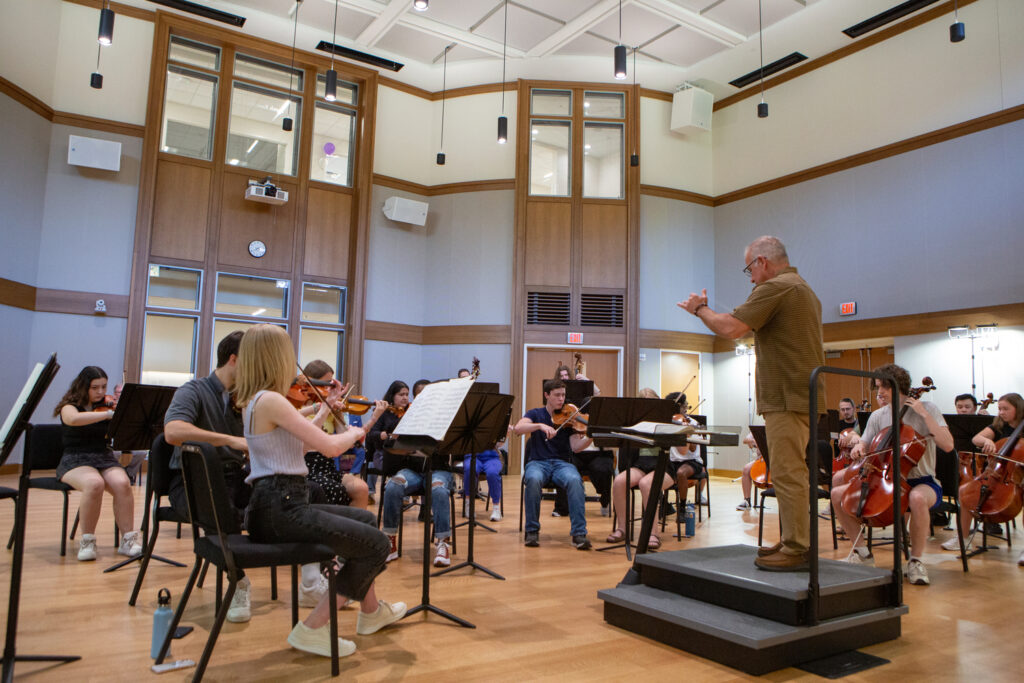
Arts at St. Thomas is deliberately working to engage the entire St. Thomas community – not just arts majors. CAS courses, which all undergraduate students take as part of their core studies, are receiving new funding to incorporate the arts in a variety of interdisciplinary ways. New research opportunities will also encourage students to explore the world through an artistic lens.
“Elevating the arts is such a wonderful way to build community, and in the process, recruit and retain Tommies,” Tolman said. “What an opportunity we have here to become a national leader in the arts.”
Learn more about upcoming classes, events and other arts programming on the new Arts at St. Thomas website.
